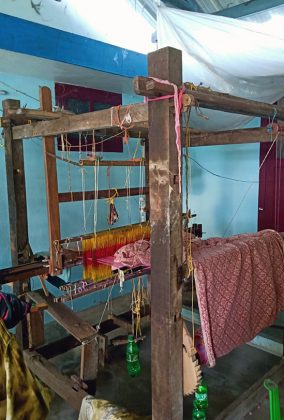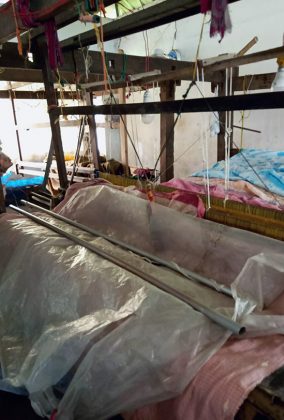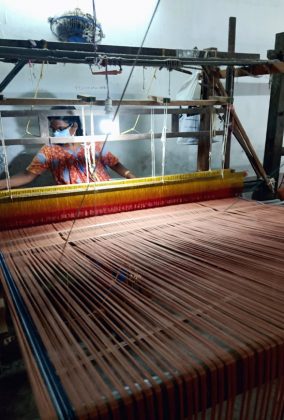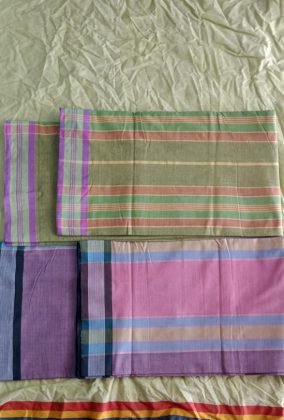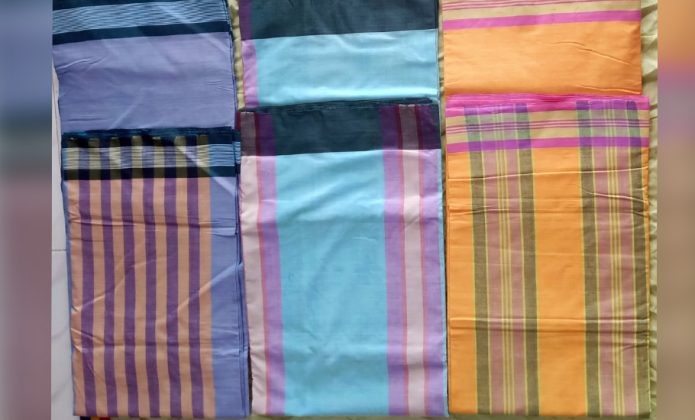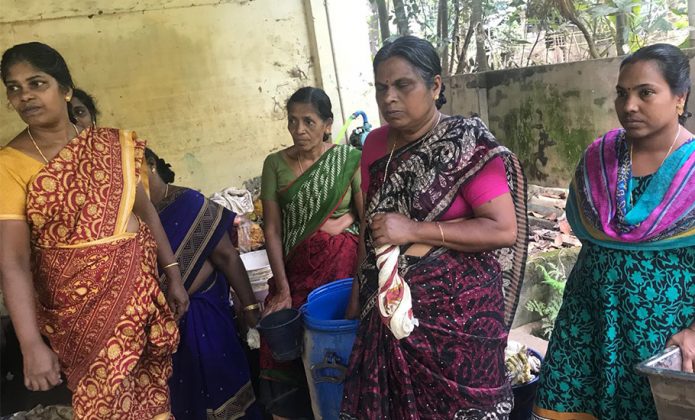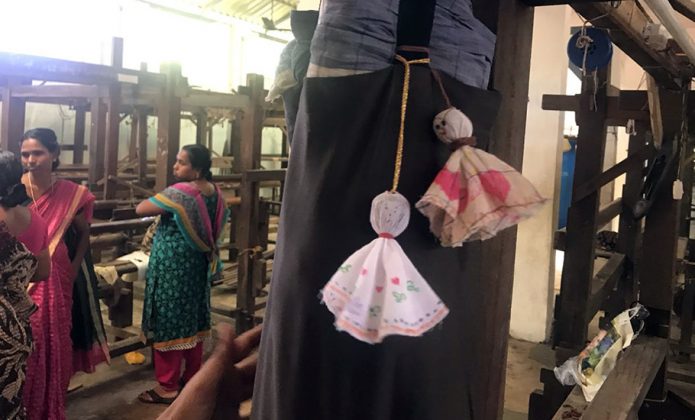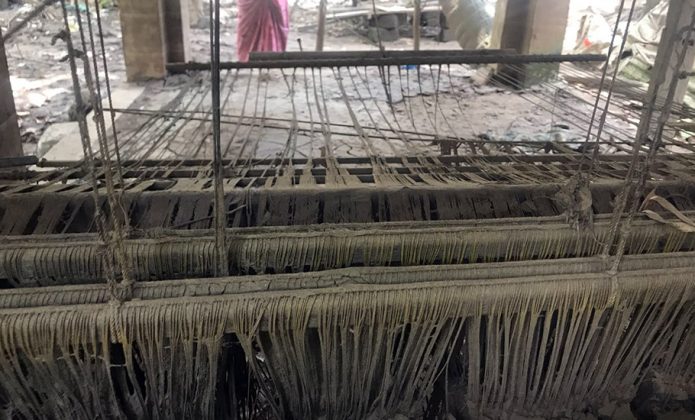
- Home
- India
- World
- Premium
- THE FEDERAL SPECIAL
- Analysis
- States
- Perspective
- Videos
- Sports
- Education
- Entertainment
- Elections
- Features
- Health
- Business
- Series
- In memoriam: Sheikh Mujibur Rahman
- Bishnoi's Men
- NEET TANGLE
- Economy Series
- Earth Day
- Kashmir’s Frozen Turbulence
- India@75
- The legend of Ramjanmabhoomi
- Liberalisation@30
- How to tame a dragon
- Celebrating biodiversity
- Farm Matters
- 50 days of solitude
- Bringing Migrants Home
- Budget 2020
- Jharkhand Votes
- The Federal Investigates
- The Federal Impact
- Vanishing Sand
- Gandhi @ 150
- Andhra Today
- Field report
- Operation Gulmarg
- Pandemic @1 Mn in India
- The Federal Year-End
- The Zero Year
- Science
- Brand studio
- Newsletter
- Elections 2024
- Events
- Home
- IndiaIndia
- World
- Analysis
- StatesStates
- PerspectivePerspective
- VideosVideos
- Sports
- Education
- Entertainment
- ElectionsElections
- Features
- Health
- BusinessBusiness
- Premium
- Loading...
Premium - Events
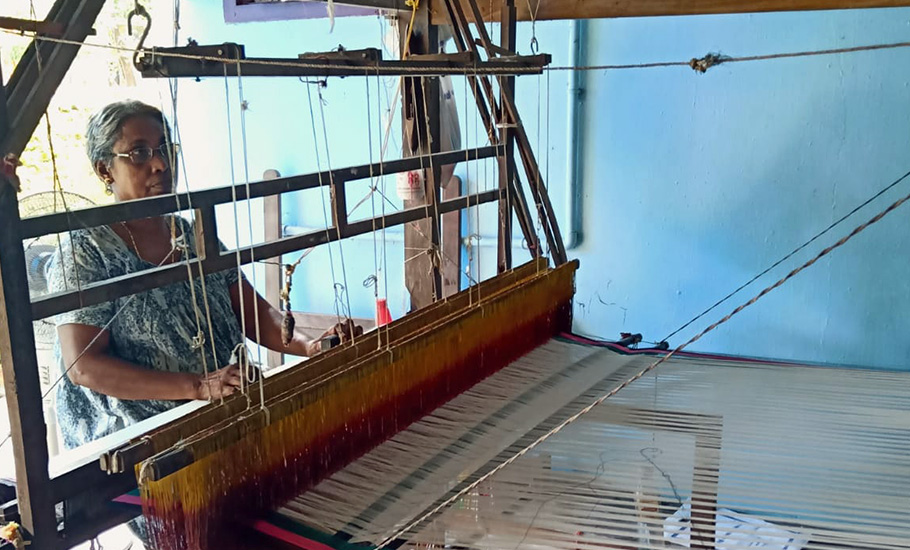
2 years after a fightback, Kerala handloom village back in deep waters
Like several other handloom traditions in India, Chendamangalam handloom has been facing a slow death.

A couple of years back, the smiley faced cute-looking Chekkutty doll made by the Chendamangalam handloom weavers in Kerala epitomised the story of resurrection and hope. Chekkutty symbolised the rebirth of a handloom village that had gone under water in the flood fury in 2018. The looms and other traditional equipment, huge bundles of thread and ready-to-sell textile material had been washed...
A couple of years back, the smiley faced cute-looking Chekkutty doll made by the Chendamangalam handloom weavers in Kerala epitomised the story of resurrection and hope.
Chekkutty symbolised the rebirth of a handloom village that had gone under water in the flood fury in 2018. The looms and other traditional equipment, huge bundles of thread and ready-to-sell textile material had been washed off, resulting in a loss of ₹15 crore.
The century old handloom art suffered a great peril. But there was an overwhelming response from the Malayali population across the world when the weavers made Chekkutty dolls.
Chendamangalam handloom was revived in a few months with the generous support of people. In addition to the financial support offered by the government and private individuals, people all over the world gave a warm welcome to Chekkutty dolls. The handloom cooperative societies of Chendamangalam sold Chekkutty dolls worth ₹36 lakh in a few months.
However, it did not last long. The Covid-19 pandemic struck, wreaking havoc and the looms had to be shut down again.
Like several other handloom traditions in India, Chendamangalam handloom has been facing a slow death. Severe financial crisis, changing fashion trends, domination of mechanised looms and the wane of interest among the younger generation.
There are 750 workers across thirteen societies. The workers continue production even in lockdown. “We are expecting an Onam sale, but it is uncertain whether the market will open,” says Sojan, secretary of Handloom Weavers Association.
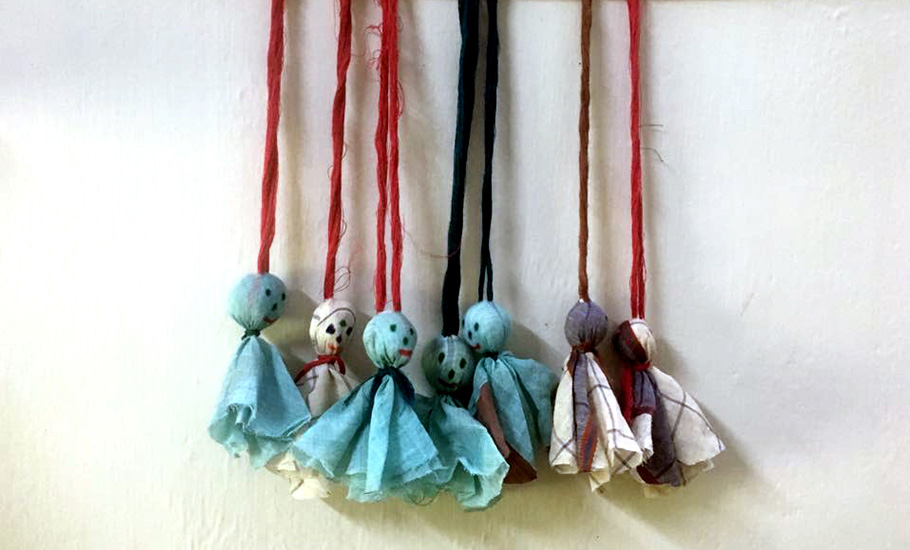
As the cooperative societies struggle to pay loans, yarn banks, which bring thread from Tamil Nadu, too have stopped supplying thread. The floods had washed off yarn banks too in 2018.
Like the Benaras silk of UP and Pochampilly saree of Andhra Pradesh, Chendamangalam handloom too received the recognition of the World Trade Organisation. As part of the TRIPS agreement, the government of India has taken steps to bring the unique textile products under the laws of intellectual property rights.
Chendamangalam handlooms too acquired the GI (Geographical Indication) registration under the Act. Despite all these, the art of weaving in the village of Chendamangalam is likely to die a natural death.
A glorious history
The history of Chendamangalam handloom begins in early 1900. The recent Pattanam excavations (by the Kerala Council of Historical Research) bring out the glimpses of the historical roots of the Chendamangalam handloom tradition which originated from the weavers who migrated from Tamil Nadu.
In the novel ‘The Saga of Musiris’ the acclaimed writer Sethu weaves the tale of the origin of Chendamangalam Handloom from folklore he collected. Soon after the great flood of 1099 ME (as per the Malayalam Calendar, 1924 July as per Gregorian Calendar), a stranger named Devayyan turned up in the village. The local people assumed he was from Tamil Nadu.
The members of the Paliyam family, the most prominent of landlords in the village, quizzed him and checked the bundle of clothes he carried. They were surprised to see dhotis with a golden border which was very unique as they had not seen it before.
The Paliyam family and other rich and royal families in Kochi and Travancore used to bring dhotis with golden lace from Pollachi and Madurai. However, the Paliyam family soon realised that what they had understood as ‘first class’ was not ‘first class’ at all. Later, they have also understood that even the members of the royal family of Tripunithura (in Kochi) did not have such a marvellous piece of cloth, finely woven with very thin golden coloured thread.
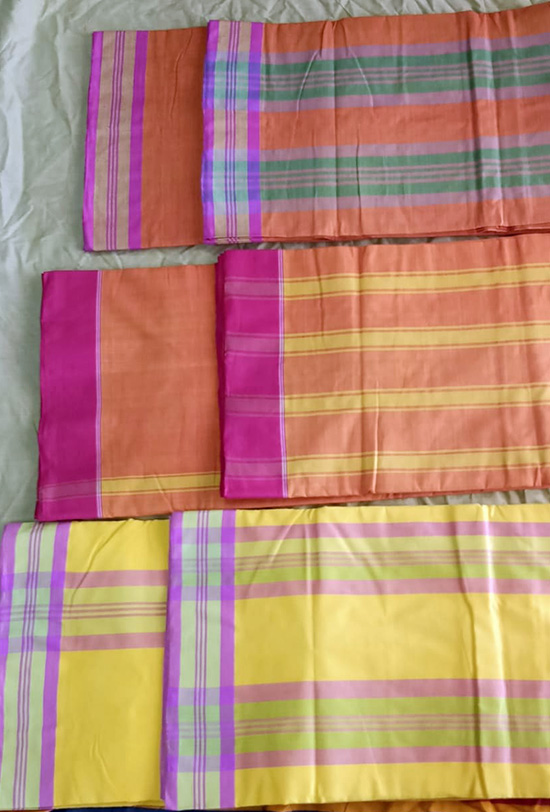
According to ‘The Saga of Musiris’, Devayyan brought looms and weavers from Tamil Nadu as instructed by the Paliyam family, and started making Mundu exclusively for the Paliyam family.
The natives of Chendamangalam who were mostly tenants of Paliyam family were keenly interested in learning this new art of hand weaving. Eventually, Chendamangalam became the headquarters of handwoven golden laced dhotis. The landlords and royal families were the customers as it was too expensive for the ordinary people to afford.
Cultural & political connect
The handloom has also woven a cultural and political connect in the society.
“The looms became the centres for sharing knowledge,” says Sojan. “There were a few who were literate. They used to read newspapers aloud for others. The looms were the doors to the world for some people of Chendamangalam.”
The weavers also organised and agitated against the discriminations practised on the grounds of caste and class, giving a boost to the Sree Narayana and the Communist movement across Kochi and Travancore.
The Paliyam Satyagraha in 1947-48 was a result of one such uprising. The lowered caste people were forbidden from using the local road to the Ayyappa temple in Chendamangalam. A satyagraha was organised jointly by the Sree Narayana Dharma Paripalana Yoga, Pulaya Mahasabha and the Community Party. The weaving community of Chendamangalam was the driving force of the satyagraha, which laid the foundation for the temple entry proclamation in Kerala.
The entry of handloom played a pivotal role in improving the lives of Ezhava community who had been engaged in the traditional occupation of toddy tapping.
Cooperative societies
“When feudalism started fading, the owners of the looms who were also the landlords eventually lost interest in running the handloom industry. The workers then united and decided to form a cooperative society,” says Sojan.
The Chendamangalam Cooperative Society was born in 1955.
Chendamangalam handloom was popularised for its uniqueness and quality. During festival seasons like Onam and Vishu, the workers used to get a handsome amount as dividend.
“Weaving was a glamorous and prestigious profession in the beginning. The younger generation then preferred to learn weaving as they wanted to give up traditional occupations such as farming, fishing and toddy tapping,” says Sojan.
“Most of the people were tenants of landlords and were agricultural labourers and fish workers. When the looms started working, youngsters were fascinated with weaving as a profession which was far more lucrative compared to the traditional occupations,” says Sojan.
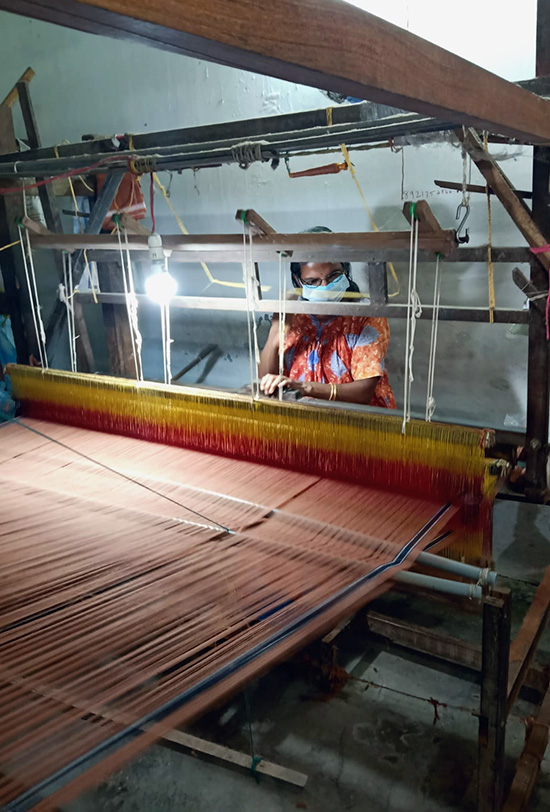
In those times, parents used to send their daughters to learn weaving after class 10, which resulted in women forming over 90% of the handloom workforce.
“Most of the weavers are women. Men opted out for better paying jobs. Women are left with no choice,” says 58-year-old Sulekha.
Future dark
However, the handloom industry started waning with the entry of mechanised looms, changing fashion trends and the Gulf boom in Kerala, that brought in more lucrative jobs to the state.
Most of the elderly workforce also don’t want their children to go into the trade. The younger generation prefer to study further or get into good jobs.
Sulekha, who has been weaving since the age of 15, says she does “not want my children to go through the same struggles that I did”, but adds that she wants to continue weaving as long as possible despite the financial struggles. She reveals that it is not because of her love for weaving but because she had not learnt anything else.
Her son went for higher education and joined the Kerala Police. She says she gets an average of ₹150 a day. Since the pandemic and subsequent lockdown, workers like Sulekha have not been able to earn.
Sixty-four-year-old Aysha learned weaving at the age of 14 and has woven for 40 years. Like Sulekha, Aysha too discouraged her sons to learn weaving. And she too does not hate looms.
“I am still doing it not just for money. All handloom workers are struggling. We get only a meagre amount, but I love it. Weaving is an art. I gave good education to my sons from my income from weaving,” she says.
Aysha’s elder son is in the Air Force and the younger one is working in construction.
Shiny, 58, who has been working in the handloom for 43 years, tells The Federal that Chendamangalam handloom tradition would soon become a story of the past. “Most of the workers have crossed sixty. A work by hand will not survive if there is no one to learn it.”
Shiny has two daughters. Her elder daughter is pursuing a Masters in Physical education and is very determined not to get married until she gets a job. “The children, especially girls of the next generation, are very determined. They want to fly. Why should we limit their world to the four walls of this handloom?” she asks.

